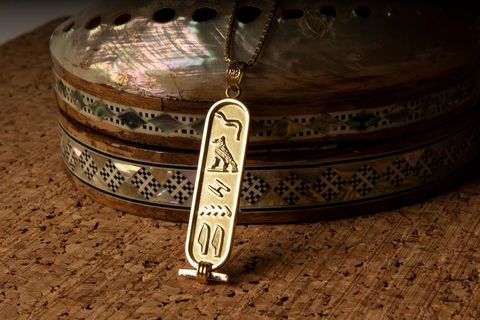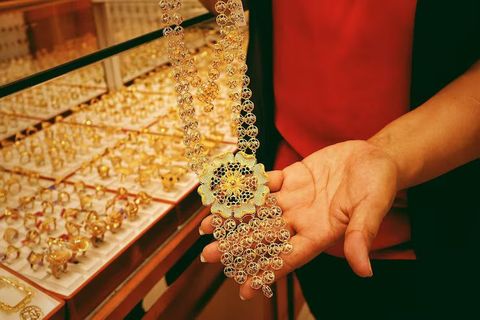People today explore various diamond shapes, clarity grades, and certification options. This shift reflects a growing interest in understanding how diamonds are evaluated and what influences their appearance. As information has become widely available, the process has moved from instinct-based choices toward knowledge-based decision-making.
Importance
Understanding how to choose a diamond ring matters for anyone seeking clarity, confidence, and long-term value in their selection. The process impacts individuals purchasing engagement rings, anniversary rings, heirloom pieces, or personal jewelry.
This topic solves several common challenges:
-
Lack of understanding about diamond grading standards
-
Difficulty comparing shapes, sizes, and qualities
-
Confusion around terminology such as clarity, brilliance, and symmetry
-
Misjudging how characteristics like cut quality influence appearance
Consumers now look for transparency, authenticity, and clear evaluation criteria. Knowing how to interpret diamond information empowers people to make informed and responsible decisions.
Recent Updates
The past year has brought noticeable changes to diamond selection, evaluation, and certification.
Key developments from 2024–2025 include:
-
Increased interest in diamond quality analytics (2024): More platforms began offering advanced light-performance tools that visually display brilliance, fire, and sparkle intensity.
-
Updates in diamond grading consistency (2024): Independent gemological laboratories strengthened uniformity in grading practices to reduce inconsistencies across reports.
-
Rise in digital comparison tools (2024–2025): New AI-based comparison systems emerged, allowing users to analyze cut proportions, inclusions, and symmetry differences in near-real time.
-
Growing preference for traceable diamonds (2025): Consumers continue prioritizing diamonds with transparent sourcing records stamped in certification documents.
-
Design trends (2025): Oval, cushion, and emerald shapes increased in popularity due to their balance of elegance and precision, according to industry reports published in early 2025.
These updates reflect a broader movement toward clarity, traceability, and informed evaluation in the diamond-selection process.
Laws or Policies
Diamond rings are influenced by quality standards, certification frameworks, and consumer protection regulations that help ensure accuracy and transparency.
Regulations and standards commonly affecting this topic include:
-
Standardized diamond grading frameworks: Many countries rely on guidelines aligned with global norms like the 4Cs cut, color, clarity, and carat weight to ensure consistent evaluation.
-
Consumer protection and disclosure requirements: Jewelry retailers must follow rules related to clear disclosure of grading information, hallmarking, and metal purity.
-
Country-specific hallmarking acts: For example, hallmarking regulations require stamped identification for gold purity in many markets to ensure accurate metal grading.
-
Certifying authorities: Recognized gemological organizations follow strict protocols for unbiased diamond assessments. Reports disclose grading details and are used as an independent quality reference.
-
Industry transparency programs: Many governments now encourage traceability initiatives to support ethical and responsible sourcing.
These policies ensure buyers have access to accurate information, helping them make decisions based on standardized grading rather than subjective descriptions.
Tools and Resources
Several resources help individuals evaluate diamond rings with confidence and clarity. These tools provide insights into quality, proportions, and visual characteristics.
Diamond Evaluation Tools:
-
4C calculators: Tools that help compare cut, color, clarity, and carat combinations.
-
Proportion analyzers: Used to assess table size, depth percentages, symmetry, and alignment.
-
Light-performance viewers: Show brilliance, fire, and scintillation intensity patterns.
-
Diamond imaging tools: 360-degree viewing platforms for inspecting inclusions and polish quality.
-
Certification verification portals: Platforms for checking report numbers issued by recognized grading authorities.
Design and Planning Tools:
-
Ring-sizing charts: Printable or digital guides to determine accurate sizes.
-
Virtual try-on apps: Augmented-reality tools that allow users to visualize how designs appear on the hand.
-
Shape comparison grids: Help evaluate differences between round, oval, princess, pear, cushion, and emerald shapes.
Educational Resources:
-
Gemology learning platforms
-
Glossaries explaining diamond terminology
-
Industry comparison tables for shapes, clarity grades, and cut proportions
These resources make it easier for users to compare characteristics, understand grading, and visualize different designs.
Diamond Characteristics Comparison Table
| Diamond Shape | Visual Style | Strengths | Considerations |
|---|---|---|---|
| Round | Classic, brilliant | High sparkle | Usually paired with precise cut grading |
| Oval | Elongated elegance | Appears larger | Bow-tie effect may occur |
| Cushion | Soft, vintage | Balanced brilliance | Shape variations differ |
| Emerald | Step-cut clarity | Clean lines | Imperfections more visible |
| Princess | Geometric brilliance | Modern style | Sharp corners influence setting |
| Pear | Teardrop shape | Unique silhouette | Symmetry is important |
FAQs
1. What is the most important factor when choosing a diamond ring?
Cut quality is often considered the most influential factor because it affects brilliance and overall appearance. Even with high color and clarity, a poorly cut diamond may appear dull.
2. How do diamond certifications help?
Certifications from recognized laboratories provide independently verified grading information. They ensure consistency, transparency, and trusted evaluation.
3. What is the difference between clarity and color?
Clarity refers to natural internal inclusions or external features, while color describes how colorless the diamond appears. Both influence visual quality, but clarity mainly affects purity while color affects tone.
4. Do diamond shapes affect how large they look?
Yes. Shapes like oval, marquise, and pear often appear larger than round diamonds of similar weight due to their elongated geometry.
5. How can someone compare diamonds easily?
Diamond comparison tools allow users to view proportions, light performance, and certification details side by side, making evaluation more structured and clear.
Conclusion
Finding the perfect diamond ring involves understanding grading standards, visual characteristics, and modern evaluation tools. With improved transparency, updated quality frameworks, and accessible digital resources, individuals can make informed decisions based on clarity, precision, and verified information.
By approaching the process with knowledge rather than assumptions, anyone can choose a ring that aligns with their preferences, style, and long-term expectations. This essential guide provides a foundation for recognizing what makes a diamond valuable, how modern trends influence selection, and how tools support confident decision-making.





